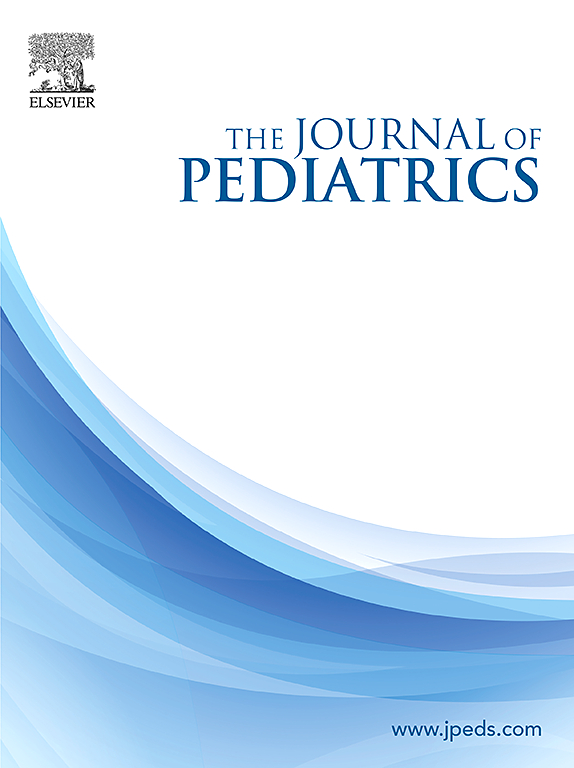The Full Range of Weight Status by Race and Ethnicity in Children with and without Autism in the United States: A Cross-Sectional Study
IF 3.9
2区 医学
Q1 PEDIATRICS
引用次数: 0
Abstract
Objective
To identify and characterize how race and ethnicity influence the relationship between autism and weight status, across all categories of weight from underweight to severe obesity.
Study design
We developed a propensity score-matched cross-sectional dataset of children with and without parent-reported autism in the National Survey of Children Health (2016-2022) and Adolescent Brain and Cognition Development Study (2016-2018). We included non-Hispanic Asian, non-Hispanic Black, non-Hispanic White, and Hispanic children aged 6-17 years. Prevalence ratios for autistic and nonautistic children were estimated with multinomial regression models across Centers for Disease Control-defined categories for underweight, healthy weight, overweight, mild-to-moderate obesity, and severe obesity, based on parent-reported height and weight and measured heights and weights (Adolescent Brain and Cognition Development Study).
Results
Prevalence disparities across racial and ethnic groups were evident and the pattern of prevalence ratios (autistic: nonautistic) showed remarkably consistent U- or J-shaped prevalence ratios. Prevalence ratios were elevated in underweight and severe obesity for autistic Asian, Black, White, and Hispanic children compared with their nonautistic peers of the same race or ethnicity, with the exception of underweight prevalence where autistic and nonautistic Asian children did not differ.
Conclusions
The largely consistent pattern of prevalence ratios comparing autistic and nonautistic children for underweight and severe overweight in the 4 major racial and ethnic groups in the US suggests that health care and other providers should be aware of these risks in autistic children, actively monitor their weight status, and intervene early to prevent excess weight loss or weight gain.
求助全文
约1分钟内获得全文
求助全文
来源期刊

Journal of Pediatrics
医学-小儿科
CiteScore
6.00
自引率
2.00%
发文量
696
审稿时长
31 days
期刊介绍:
The Journal of Pediatrics is an international peer-reviewed journal that advances pediatric research and serves as a practical guide for pediatricians who manage health and diagnose and treat disorders in infants, children, and adolescents. The Journal publishes original work based on standards of excellence and expert review. The Journal seeks to publish high quality original articles that are immediately applicable to practice (basic science, translational research, evidence-based medicine), brief clinical and laboratory case reports, medical progress, expert commentary, grand rounds, insightful editorials, “classic” physical examinations, and novel insights into clinical and academic pediatric medicine related to every aspect of child health. Published monthly since 1932, The Journal of Pediatrics continues to promote the latest developments in pediatric medicine, child health, policy, and advocacy.
Topics covered in The Journal of Pediatrics include, but are not limited to:
General Pediatrics
Pediatric Subspecialties
Adolescent Medicine
Allergy and Immunology
Cardiology
Critical Care Medicine
Developmental-Behavioral Medicine
Endocrinology
Gastroenterology
Hematology-Oncology
Infectious Diseases
Neonatal-Perinatal Medicine
Nephrology
Neurology
Emergency Medicine
Pulmonology
Rheumatology
Genetics
Ethics
Health Service Research
Pediatric Hospitalist Medicine.
 求助内容:
求助内容: 应助结果提醒方式:
应助结果提醒方式:


